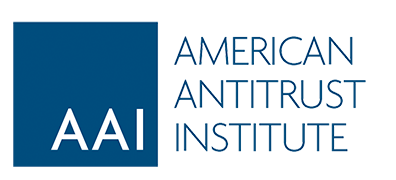MERGER REMEDIES
Talking Points of Bert Foer, President, American Antitrust Institute
FTC Merger Remedy Workshop
Oct. 23, 2002, 12-1:30 pm at 42 W. 44th Street, NYC
1. Summary of my article “Toward Guidelines for Merger Remedies” in 52 Case W. Res. L. Rev. 211 (2001)
Much commentary is by attorneys who typically represent either buyers or sellers. AAI, like the FTC, is worried foremost about the rights of consumers, and starts with the proposition that the purpose of a merger remedy is not to facilitate a private transaction but to assure the public that competition will not be diminished.
Article recognizes HSR impact in moving from regime of post hoc adjudication to ad hoc regulation and pre-hoc negotiation.
Time has come for more structured and transparent approach.
We suggested guidelines for merger remedies to channel administrative discretion and urged workshop of this sort.
We proposed presumptions that would apply to all remedies-if not satisfied, agency would have to explain.
We also proposed an alternative optional course for giving early consideration to remedy proposals when the merging parties recognize they are in a negotiation mode. Providing incentives to work in this mode is the necessary critical driver.
2. Guidelines are not the only way to go about improving merger remedies.
FTC’s Requently Asked Q&A’s are very helpful, deserve praise. Technique should be used more frequently.
Workshops also helpful, as are reports like the staff report on divestitures. Agree with GAO Report (Sept., 2002) urging additional studies of what works and what doesn’t work. Also needed by DOJ. Important: next study must have a more robust test for remedial success.
FTC can also take actions voluntarily to explain their decisions carefully, as in cruise merger case, a commendable example of carefully explaining a decision not to proceed.
When FTC provides an explanation, there should be both an opportunity to comment and a Commission response to comments, as under Tunney Act.
3. Remedies traditionally have been a low priority in antitrust enforcement, but this has been improving, especially at the FTC.
FTC has been doing a better job than DOJ in the remedy area.
FTC: Innovative and more complete remedies, using tools of up front buyers, clean sweep, trustees; giving larger role to compliance staff in enforcement strategy.
FTC: Does better job of explaining actions…though improvements still needed. More detail needed in explanations of why certain remedies took the shape they did.
4. In thinking about remedies, need to focus on risks, costs of various approaches.
Facts are key and FTC tends to work on a sliding scale: greater the uncertainty, greater the risk of losing competition force, more is required to get the merger through. Not ideological, but case by case. This is the right approach.
Up-front buyer is particularly important tool, as demonstrated in the staff divestiture report.
5. Should small businesses have a role as buyers?
The test is keeping the market no less competitive than pre-merger. Small and local businesses should have an opportunity to make the case that they are able to be an effective buyer…but antitrust is not a set-aside program and potential buyers should not automatically be given an edge because they are small. At the same time, Commission must pay more attention to problems of monopsony/oligopsony that is enhanced by divestitures to large buyers.


